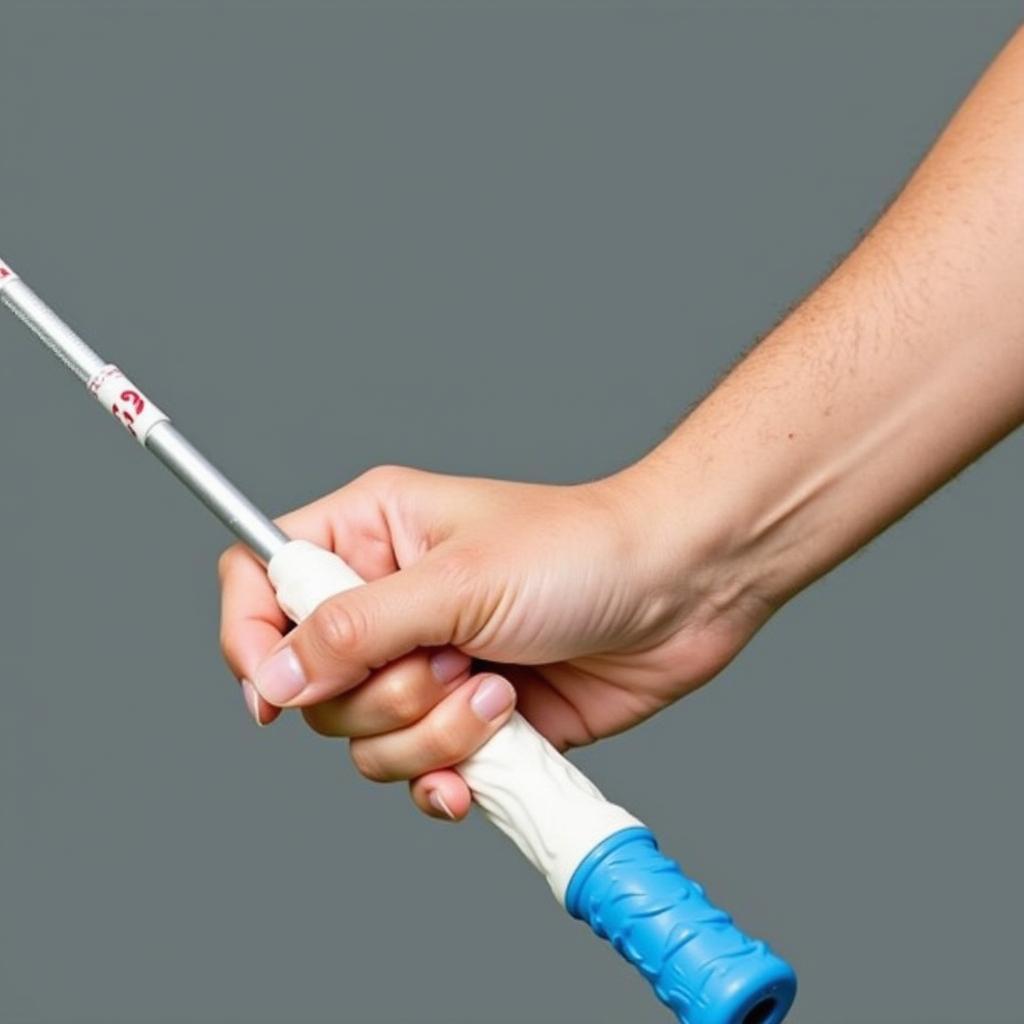Mastering Badminton Techniques
October 17, 2024Badminton, a sport enjoyed by millions worldwide, requires a combination of skill, strategy, and precision. Whether you’re a beginner picking up a racket for the first time or a seasoned player aiming to refine your game, understanding and mastering the fundamental badminton techniques is crucial. This comprehensive guide will delve into the essential techniques to elevate your badminton prowess.
The Grip: Your Connection to the Racket
 Badminton Grip Styles
Badminton Grip Styles
The way you hold your racket, known as the grip, significantly influences your shot execution. Two primary grips form the foundation of badminton:
-
Forehand Grip: Imagine shaking hands with the racket. Your index finger should point slightly up the racket handle, promoting wrist flexibility and power for forehand shots.
-
Backhand Grip: Rotate your hand counterclockwise from the forehand grip (for right-handed players), so your thumb rests against the wider, flatter part of the racket handle. This grip facilitates backhand shots with greater control and reach.
Mastering both grips is essential for a versatile game, allowing you to seamlessly switch between forehand and backhand shots depending on the shuttlecock’s position.
Footwork: The Foundation of Agility
 Badminton Court Footwork Patterns
Badminton Court Footwork Patterns
Badminton demands swift and precise movements across the court. Efficient footwork allows you to reach the shuttlecock quickly while maintaining balance and control. Key footwork techniques include:
-
Side-to-Side Shuffle: Used for covering ground quickly along the net or baseline, this involves small, rapid side steps with your feet always facing forward.
-
Lunge: Employed to reach shots outside your immediate reach, the lunge involves extending one leg forward to strike the shuttlecock while maintaining a low center of gravity.
-
Jump Smash: For powerful overhead shots, the jump smash combines upward momentum with a powerful arm swing, requiring precise timing and coordination.
Practicing footwork drills and incorporating shadow badminton (mimicking movements without a shuttlecock) can significantly enhance your agility and court coverage.
Strokes: The Art of Shuttlecock Control
A variety of strokes form the core of badminton, each with its own purpose and technique:
-
Clear: A defensive shot aimed at hitting the shuttlecock high and deep into the opponent’s court, buying you time to recover.
-
Drop Shot: A deceptive shot that requires finesse, the drop shot aims to land the shuttlecock softly just over the net, catching your opponent off guard.
-
Drive: A powerful, flat shot hit with speed and accuracy, often used for attacking and forcing errors from your opponent.
-
Smash: The most aggressive shot in badminton, the smash is a powerful overhead shot aimed at sending the shuttlecock down steeply into your opponent’s court.
Mastering these strokes and understanding when to employ them strategically is key to dictating the pace of the game and outmaneuvering your opponent.
Serving and Returning: Setting the Tone
The serve marks the beginning of each rally and presents an opportunity to gain an early advantage. Different serve types exist, including:
-
High Serve: A defensive serve aimed at pushing your opponent to the back of the court, commonly used in singles.
-
Low Serve: An offensive serve aimed at catching your opponent off guard by landing the shuttlecock just over the net, often used in doubles.
-
Flick Serve: A deceptive serve that appears like a high serve but is flicked short, catching your opponent off guard.
Returning serves effectively is equally crucial. A good return will neutralize your opponent’s attack and allow you to dictate the rally.
Beyond the Basics: Advanced Techniques and Strategies
As you progress, incorporating advanced techniques and strategies can elevate your game further:
-
Deception: Mastering deceptive shots, like disguised clears or drop shots, can catch your opponent off guard and create winning opportunities.
-
Net Play: Effective net play involves soft hands, quick reflexes, and the ability to execute shots like net kills, net drops, and net lifts.
-
Court Awareness: Anticipating your opponent’s shots and positioning yourself strategically on the court allows you to react quickly and control the flow of the game.
Conclusion
Mastering badminton techniques requires dedication, practice, and a deep understanding of the game’s intricacies. By focusing on your grip, footwork, strokes, serve, and return, and incorporating advanced techniques as you progress, you can elevate your badminton skills and enjoy the game at a higher level. Remember, consistent practice and a love for the sport are the key ingredients to success on the badminton court.
For further support and guidance on your badminton journey, feel free to contact us:
Phone Number: 0396443476
Email: [email protected]
Address: 23 Thang 3, Dak Nia, Gia Nghia, Dak Nong, Vietnam.
Our dedicated customer support team is available 24/7 to assist you.